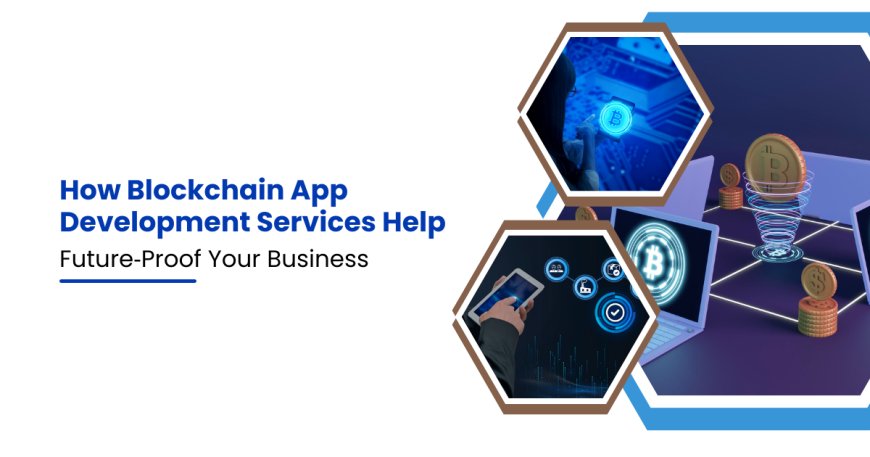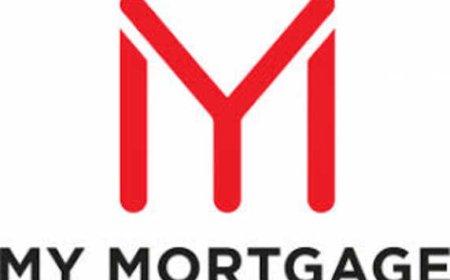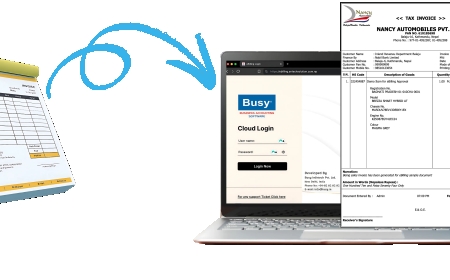How Blockchain App Development Services Help Future‑Proof Your Business
Explore how blockchain app development services can future-proof your business by enhancing security, transparency, and efficiency. Learn how decentralized solutions are driving innovation across industries.

In 2024, global investment in blockchain solutions surged past $19?billion up 45% year-over-year. Businesses adopting blockchain reported a 30% increase in data integrity and a 25% reduction in fraud. Against rising cyber threats and stricter compliance demands, leveraging Blockchain App Development Services provides a concrete edge. These services help companies build secure, transparent, and scalable solutions. This guide explores, from a technical perspective, how blockchain development supports future-proof operations.
Understanding the Opportunity
Blockchain provides a tamper-evident ledger distributed across nodes, eliminating single points of failure. Smart contracts automate transactions, reducing intermediaries and human error. A transparent audit trail aids compliance. These characteristics address core business challenges: data security, operational resilience, and trustworthiness.
By integrating blockchain, organizations harness these strengths not as abstract ideals, but as real tools for better supply chains, clear asset ownership, and reliable audit systems. For companies planning ahead, these strengths justify investment.
Structure of Blockchain App Development Services
When considering Blockchain App Development Services, you should expect providers to cover:
-
Platform selection choosing Ethereum, Hyperledger Fabric, or Solana.
-
Smart contract creation coding and testing in Solidity, Chaincode, or Rust.
-
Consensus layer config deciding between PoW, PoS, or permissioned models.
-
Backend plus middleware handling transactions, indexing, and node activity.
-
Frontend integration linking wallets, building dashboards, developing dApps.
-
Security evaluation static code analysis, fuzzing, audits, and penetration tests.
-
Deployment and DevOps node provisioning, auto-scaling, monitoring, and updates.
-
Maintenance patching, governance, forks, and protocol upgrades.
A full-service provider guides you through all technical stepsfrom selecting chains to running live systems.
Choosing the Right Blockchain Platform
Platform selection drives performance, cost, and ecosystem fit. Public chains like Ethereum offer mature tools and large communities, though transaction fees fluctuate. Permissioned options like Hyperledger provide controlled environments suited for enterprise use. Solana promises high throughput and microtransaction support but requires GPU-capable node infrastructure. Corda offers privacy features fit for finance and compliance workflows.
A strong provider evaluates throughput and privacy needs, along with future growth scenarios, to propose the proper platform.
Smart Contracts: Coding Trust
Smart contracts execute automatically once conditions meet. They form the core of on-chain automation tokens, supply triggers, identity grants, or finance flows. Code usually lives in languages like Solidity, Go, or Rust and follows patterns that support versioning and upgrades (proxy-based, modular libraries).
Coding decisions influence safety and cost. For example, gas optimization affects user cost on public networks. Logic layering ensures contract reuse and easier testing.
Security: Non-Negotiable Aspect
Blockchain is unforgiving about vulnerabilities. Errors like reentrancy or integer overflow can freeze or drain funds. Providers of Blockchain App Development Services practice layered security:
-
Static analysis using Slither or MythX to detect common flaws
-
Fuzz testing for edge-case logic
-
Manual review following industry best practices
-
Penetration testing on perimeter interfaces like APIs and wallets
-
Protection of private keys using HSMs or secure enclaves
Only audited, hardened systems reach production, safeguarding assets and reputation.
Middleware and Backend Integration
Blockchain does not operate in isolation. Effective solutions require integration with enterprise systems such as ERP, CRM, or inventory platforms. Middleware built in Node.js or Go uses Web3, Ethers.js, or Hyperledger SDKs. These services relay on-chain events into traditional systems and vice versa.
For example, a supply chain solution might capture shipment status in ERP when IoT sensors tag a container, then log that event to blockchain. Middleware handles syncing, failure retries, and duplicate prevention. Well-designed services maintain consistency across all systems.
User Interfaces and dApp Construction
Applications experience usability only through well-designed frontends. Developers integrate wallets (MetaMask, WalletConnect) and ensure users see updates like transaction confirms and balances. UX is simplified through familiar frameworks React, Angular, Vue with context-aware prompts (e.g., "Confirm transaction").
Some designs avoid forcing users to use wallets by integrating custodial services. Either way, the interface hides blockchain complexity but keeps necessary transparency visible.
Consensus Mechanisms and Trust Models
Blockchain networks rely on consensus to confirm data. Permissionless chains like Ethereum use proof-of-stake validators for distributed trust. Private chains use practical Byzantine fault tolerance (PBFT) with permissioned governance, suitable for regulated industries. The wrong selection risks slow confirmations, high cost, or data exposure.
A solid provider guides you through trade-offs, recommending suitable consensus models based on transaction volume, governance needs, and speed requirements.
Deploying Nodes and DevOps Practices
Running blockchain applications requires infrastructure planning:
-
Full nodes maintain history for validation
-
Archive nodes provide deep analytics
-
Indexers extract key data into databases for UIs
-
Load balancers ensure API availability
-
Auto-scaling handles spikes in interactions
Monitoring systems (Prometheus, Grafana) track uptime and transaction activity. Providers use container platforms or Kubernetes to manage high availability.
Data Privacy: Public vs Private
Public blockchains expose ledger entries. For scenarios requiring confidentiality, solutions may include:
-
Zero-knowledge proofs enabling on-chain verification without revealing data
-
Private transactions in Hyperledger or permissioned chains
-
Off-chain data storage systems with on-chain hash anchoring for auditability
Such hybrid patterns satisfy regulatory needs in healthcare, finance, or supply chains.
Performance and Cost Optimization
High-throughput systems demand benchmarks. Ethereums variable gas costs impact transaction budgets, while Solana trades computation for hardware needs. Permissioned chains offer predictable fees but require resource investment. Providers design test environments emulating real network activity to measure latency and cost per operation. Smart contract gas usage and backend efficiency are optimized based on these results.
Also Read: How to Develop Blockchain Applications: A Comprehensive Guide
Observability and Analytics
Visibility into on-chain processes matters. Tools like The Graph support complex queries. Monitoring platforms track node performance, failed transactions, and gas usage. Alerts warn teams of node outages or fee spikes. Analytics layers can visualize asset flows, token usage, or membership changes. Such visibility supports operations and compliance efforts.
Interoperability and Cross-Chain Solutions
Value often resides across chains. Bridging solutions facilitate token transfer (wrapped assets) or data relativity. Oracles (Chainlink, Band) provide off-chain data like prices or temperatures. Interoperability SDKs like Polkadots Substrate or Cosmos aim to simplify cross-chain logic. Providers ensure secure bridging and rollback safeguards to avoid double-spend or mismatched states.
Use Case: Traceable Supply Chains
A consumer goods company used blockchain to track product origin. Smart contracts tagged raw materials at harvest. Middleware captured IoT sensor data along the logistic chain. Hyperledger Fabric handled private enterprise data sharing. Customers retrieved product provenance via a web portal scanning QR codes. The outcome: counterfeit reduction, trust increase, and regulatory compliance.
Use Case: Tokenized Membership
A luxury hotel chain issued tokenized memberships. A smart contract represented membership tiers and benefits. The blockchain maintained ownership and transferability. API integration with booking systems recognized token status to validate perks. Guests could gift or trade memberships. The result was a 20% increase in secondary transfers and improved audit clarity.
Evaluating Potential Providers
Selecting a blockchain development firm requires due diligence. Look for:
-
Domain experience in your industry and blockchain use case
-
Strong auditing practice and security certifications
-
Record of deployments tested and running systems
-
API/legacy integration capabilities
-
Governance experience with permissioned networks
-
Post-deployment support, including upgrades and forks
A trial or pilot project reveals collaboration quality and technical maturity.
Emerging Trends in Blockchain Development
The landscape continues evolving. Layer-2 solutions (e.g., Optimistic and ZK rollups) reduce cost and latency. New token standards improve compliance and identity use cases. Decentralized autonomous organizations (DAOs) allow automated governance. On-chain identity merges with decentralized KYC. Platforms link IoT events with blockchains for digital twins. Blockchain development services must be architecture-aware and upgrade-ready.
Measuring Project Success
Trackable metrics include transactions per second, contract execution cost, node uptime, and failed transaction ratios. Business KPIs might include reduced fraud incidents, improved audit times, or revenue from digital products. Providers design dashboards and SLA reports to track these.
Cost Structure and ROI
Costs vary across contract development, audits, infrastructure, and integration. Cloud-hosted nodes may cost hundreds per month. Security audits can reach tens of thousands per contract. However, fraud reduction, process automation, and new revenue streams deliver ROI within 1218 months for most industries.
Step-by-Step Roadmap
-
Identify a business problem suited to blockchain
-
Create a proof-of-concept with smart contracts and node setup
-
Conduct a security audit and pilot deployment
-
Launch a minimal viable solution to real users
-
Scale node infrastructure and governance
-
Incorporate feedback and make upgrades
-
Maintain and monitor continuously
This iterative model reduces technical risk and ensures business alignment.
Developer Workflow and CI/CD
Providers implement rigorous DevOps pipelines:
-
Code compiles with solc or other compilers
-
Automated tests via Hardhat or Truffle
-
Security checks run automatically on PRs
-
Containers store node setup, making environments repeatable
-
Upgrades use proxy contracts to avoid freeze-outs
This workflow ensures secure and auditable deployments.
Maintenance, Governance, and Upgrades
Live systems require ongoing attention. Protocols may be hard-fork, nodes need updates, and security vulnerabilities appear over time. Permissioned systems change participants and need governance support. Providers must offer long-term monitoring, management, and upgrades.
Challenges and Risk Factors
Blockchain projects hold well-documented risks:
-
Reentrancy bugs and exploits
-
API endpoints vulnerable to denial-of-service
-
Bridging weaknesses in cross-chain transfers
-
Evolving regulations around tokens
-
Sudden fee spikes in public chains
These issues are managed through frequent audits, throttling strategies, and fallback logic.
Conclusion
Blockchain App Development Services supply technical mastery for building secure, scalable, auditable systems. By combining smart contracts, robust infrastructure, security protocols, and clean interfaces, these solutions build trust and new revenue pathways. With rapid deployment and active maintenance, blockchain becomes a foundation for future innovation and resilience.
By choosing the right provider and architecture, businesses can reduce risk, build transparency, and maintain relevance as digital ecosystems evolve. Blockchain development isnt a gamble, it's a strategic investment in tomorrows business landscape.































